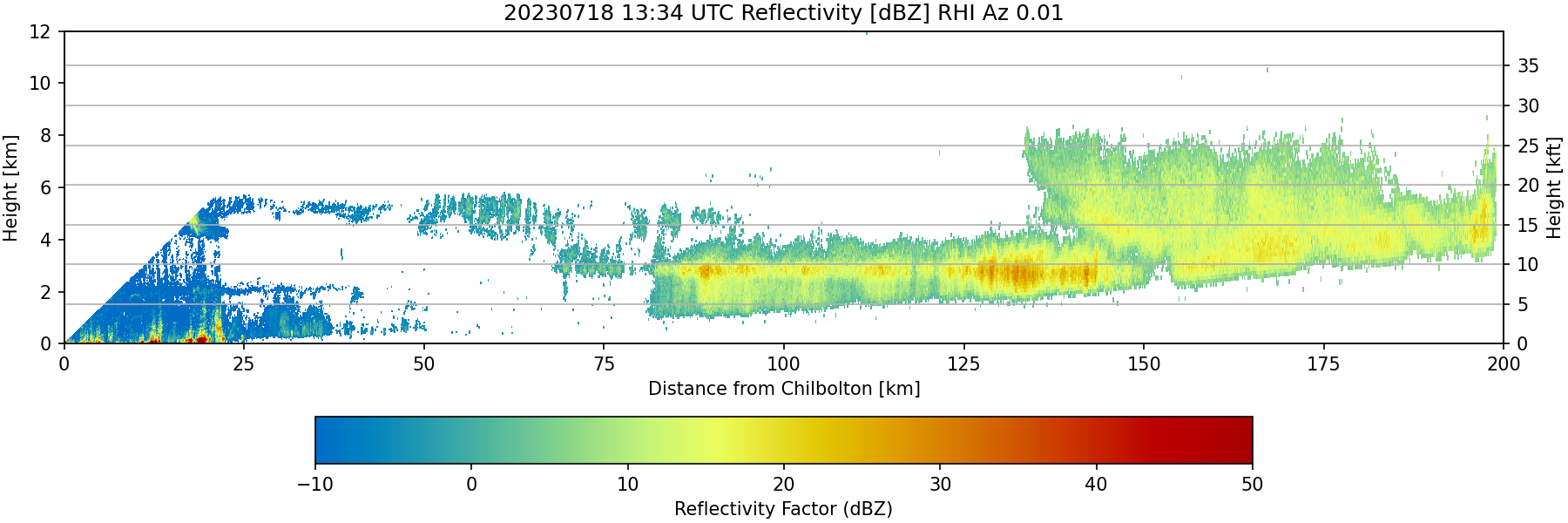Instrument Support Level 4
Bespoke build with Marconi transmitter
£70
Calendar

3 GHz Chilbolton Advanced Meteorological Radar (CAMRa)
The Chilbolton Advanced Meteorological Radar (CAMRa) is an S-band dual-polarization Doppler radar based on a fully steerable 25 m diameter dish antenna, a magnetron transmitter, a dual-channel superheterodyne receiver, and a hybrid analogue-digital signal processor. The radar uses a digital signal processing scheme to achieve coherent-on-receive operation. The radar transmits alternately horizontally and vertically polarised pulses and receives both co-polar and cross-polar returns. This approach permits real-time measurement and display of Z, ZDR, LDR, v, w, φDP, KDP and ρHV. For more detailed studies, full time-series measurements of I and Q are also possible over a large number of range-gates and transmitted pulses.
Typical research areas for which CAMRa is used include rainfall rate estimation, hydrometeor characterization (with aircraft verification), effects of precipitation on terrestrial and earth-space radio propagation, multi-wavelength studies of cloud and precipitation, clear-air and boundary layer investigations and satellite sensor ground-truth verification. It is operated on a case-study basis.
A detailed description of the radar sub-system hardware and of the signal processing scheme, together with examples of typical measured data, is given in ‘The Chilbolton Advanced Meteorological Radar: a tool for multidisciplinary atmospheric research’ by J. W. F. Goddard, J. D. Eastment and M. Thurai. IEE Electronics and Communications Engineering Journal, April 1994. Vol. 6, No. 2. pp 77 – 86.
The instrument scientist is responsible for monitoring the quality of the data during the deployment of the radar. The system has a number of diagnostics that allows the instrument scientist to determine if the system is operating optimally or requires manufacturer servicing and intervention. The instrument scientist will also perform standard quality control on the campaign dataset after deployment.
Field Data
- The radar records raw data in NetCDF format, and produces near real-time products and quicklook plots.
- AMOF has created further Python scripts that may be adapted to produce plots tailored to user needs.

Archive data
- Data is provided in CfRadial NetCDF files following the NCAS radar data standard
- Files may contain multiple sweeps (e.g. sets of RHI or PPI scans) grouped according to the particular application.
- The instrument name is
- ncas-radar-camra-1
- The data product(s) associated with this instrument:
- Level 1 – the native/raw data from the instrument software is processed to CfRadial files.
- Level 2 – QC and calibration offsets for equivalent reflectivity factor and differential reflectivity applied.
